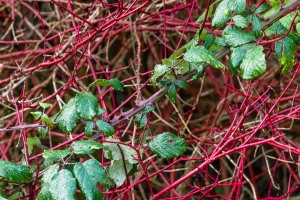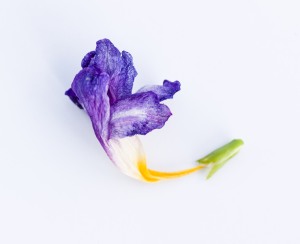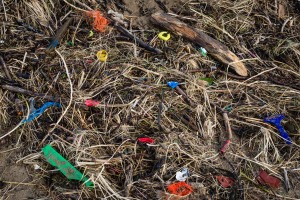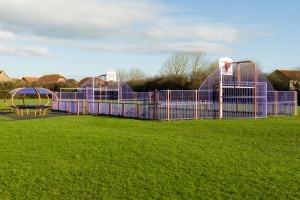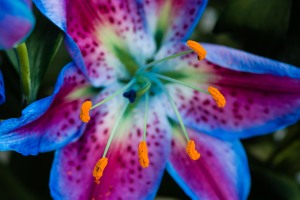Task
This assignment is about showing command of colour in photography, being able to find and use different colours in deliberate relationships. It should be possible to identify at least two kinds of colour relationship.
- Complementary (colours that face each other across the circle)
- similar (those near each other, as in cool or warm range of colours)
- Colours spaced about a third of the way around the circle: very different from each other, but not quite complementary. Blue and red are an example, as are green and orange. This kind of combination has a strong contrast and they might even be considered to clash with each other. Using this kind of relationship is not particularly harmonious, but is certainly eye-catching
- A fourth kind of relationship is when one small area of colour sits against a much larger background of another colour as a spot or accent
Four photographs are required (16 in total) that illustrate the following colour relationships:
- Colour harmony through complementary colours
- Colour harmony through similar colours
- Colour contrast through contrasting colours
- Colour accent using any of the above
The subject matter should be varied, including both arrangements (eg still-life) and found situations. Make use of both lighting conditions and filters to help create the colours being sought in some of the photographs. Make notes about the ways in which the colours work in each image and make a sketch for each to show the balance and movement.
Include a self-assessment of the work against the criteria given in the course manual.
Research
My first concern was regarding the overall approach to this assignment; whether to decide at the outset what I would go out and look for in respect of the ‘as found’ scenes based on previous excursions or go walkabout and be inspired by what I might find; it was difficult enough finding natural scenes for the exercises in this section. Considering the high probability that I would waste time searching for preconceived ideas I opted for the ‘walkabout’ option. Clearly still-life scenes needed some prior consideration to enable something sensible to be put together. Technically I felt pretty confident about the ‘as found’ shots, but not so much so for the still-life scenes which I still find a challenge both in composition (it doesn’t come naturally!) and lighting. As such, I spent some time looking at examples of still-life images by both photographers and artists on the internet, both to find inspiration for subject matter and composition. Having had extensive comment on Assignment two from my tutor regarding post processing and the need to get to grips with this aspect of making a photograph I also spent a good deal of time reviewing my workflow in Lightroom in the pursuit of images that ‘sing’; I have to admit that although I was able to define the process to follow the degree of alteration of the various parameters still remains a concern as there appear to be so many differing views in the articles and books I read.
Outcome
All photographs were shot on a Nikon D600 and in most instances I set a custom white balance using a grey card, resetting when the light changed. I have developed a number of custom camera profiles (not sure I have totally got my head around how many of these you should generate) using a ColorChecker Passport which I apply as the first stage of post-processing in Lightroom along with lens corrections.
Colour harmony through complementary colours
- DC6_3936 – 1/45 sec, f5.6, ISO100, 70mm
This is the stern of a particularly gaudy barge which provides a good example of complementary colours. It was difficult to compose the shot to get the ideal ratios both due to the position of the barge and the extent of red in the railings and rudder gear. However, as indicated on the sketch, I think the proportions are about right. I am unsure about depicting the movement in this shot but I think the railing moves the eye around the picture whilst the tiller handle implies direction. Post-processing consisted of adjusting the exposure, black clipping and shadows, increasing clarity and vibrance to bring out the detail and texture and finally adjusting the tone curve to add contrast.
- DC6_3835 – 1/350 sec, f6.7, ISO100, 70mm
Spend enough time on Shanks’s pony and you can still find some of nature’s finest. Composition was the first challenge here, not least having to work my way into the bush to get the right viewing position. Also, in trying to gauge the red and green proportions I found the berries very deceptive in terms of a bulk of colour, if that makes sense. Once I got this shot up on-screen it was obvious that it was in need of some cropping, not a surprise to me. I then decided to try a different white balance which I found delivered a better result. There are a good many shadow areas so some adjustment of the black and shadows was applied after having tried some exposure adjustment (reset to original). Some increase in clarity and vibrance brought up the saturation and detail but I still found the colour of the berries to be wrong to my eye so I applied some saturation using the HSL panel slider.
- DC6_4126 – 1/125 sec, f8, ISO400, 70mm
I could not believe my luck when I turned the corner and saw this building; admittedly the orange facade was considerably larger than the blue shop front, which was the wrong way round for balance, so cropping was the order of the day. I also felt that having the pastel coloured building alongside made the orange and blue more prominent, hence giving the blue more presence than it would have had otherwise. It is notable that I discounted the colour in the windows of the blue-fronted building due to the difference in hue – I may be in error here but it would be a matter of adjusting the crop to get the ratios right. In Lightroom I dropped a half stop in exposure before adjusting the highlights. As usual I increased clarity and vibrance which, in particular, I found to bring out the endearing shabbiness of the building giving character, and added contrast in the tone curve panel.
- DC6_4154 – 1/20 sec, f5.6, ISO400, 50mm
The dreaded still-life! I think it works insomuch as depicting an activity, heading out of the front door for a run, although on reflection it is perhaps a bit stilted; probably in trying to get the proportion of the yellow correct. I positioned the articles near the front door in the hope that the light falling on one side conveyed the impression that we were heading to the great outdoors, also indicated by the diagonals of the floorboards, but this caused me problems with the overall exposure, even though I tried using white card as a reflector. Post processing started with some cropping, reducing the exposure by 2/3 of a stop, increasing clarity and vibrance and finally adding contrast in the tone curve.
Similar colours
- DC6_3957 – 1/180 sec, f5.6, ISO100, 70mm
A classic case of being ready for the unexpected! Whilst considering a shot in a different direction I caught this out of the corner of my eye and had little time to capture the moment as they galloped off into the distance in the rain, hence not as sharp as I would have liked. However, for me, it contains all that is asked for, similar colours (notwithstanding the coloured pillars in the background) and movement, all within the mood of the day which was dank and overcast. In post-processing I spent some time cropping the image trying to determine whether more of the background should be included to put it into context; I think this provides enough space for them to ‘run into’ whilst emphasising the colours of their kit. I reduced the exposure slightly, adjusted the black and white to eliminate some clipping and added clarity and vibrance and adjusted the contrast; the processing challenge here centred around the pink shirt.
- DC6_4064 – 1/45 sec, f4.8, ISO200, 70mm
Amazing what you can find in the dry(!) dock of the SS Great Britain. To my mind a prime example of nature’s colour variation. The fact that there was a slow trickle of water flowing constantly provided the sheen which caught the eye and emphasised the textures and hues. On reflection I should have gone for a smaller aperture to give a greater depth of field, the light was not too bad so a modest increase in ISO would have enabled this. The image also portrays the movement of the water by way of the lighter areas and erosion of the stone. In LR I spent some time adjusting the exposure and dealing with the consequent black and white clipping then applied some clarity and vibrance increase which, coupled with strong contrast adjustment, brought out the colour variations and textures. A real indicator of what nature can produce if left to her own devices.
- DC6_4110 – 1/180 sec, f11, ISO400, 40mm
One of my favourite buildings in Bristol not for its architectural excellence per se but the glass finish which has infinite variations as the light and viewing angle changes. I shot the whole building with view of cropping later as I could not make up my mind at the time how much was required to best illustrate the similar colours and in the knowledge that vertical correction crops the image. Indeed, when you get the image on-screen you really see the colour variation. There was also the issue of converging verticals given the viewing angle. Once in LR I applied the vertical correction and then applied much cropping to achieve the desired result. I was then faced with a pretty drab, flat image and instantly recalled my tutor’s comment about making an image ‘sing’ – how to achieve this, had I picked a bad one here given my less than honed LR skills? This is the result of much ‘fiddling’ with exposure, clipping, vibrance, clarity and contrast. I have to say that this is perhaps not what the building looked like on the day but more what it is capable of looking like. This is perhaps one image I expect will attract significant comment in assessment but feel it is warranted including to get that feedback – have I gone too far?
- DC6_4138 – 1/10 sec, f8, ISO100, 85mm
This was one still-life that I had determined to do having seen something similar before, although a lot more striking – walk before you run. Not only does this product seem to have an infinite variation in shades but I think it lends itself to still-life. Nevertheless, it is amazing how long it can take to arrange 3 bottles to one’s satisfaction! Early on in the proceedings I learnt how all manner of stuff shows up on a black background. I experimented with both ambient light and flash and found ambient to deliver a better effect; having the camera tripod mounted eliminated any concerns about long exposure times. All shots were taken with mirror up and a remote shutter release. I followed my post processing routine but found myself revisiting settings time and time again, this image has the longest history record in LR. Much of my difficulty was around the blacks and shadows and I think this is still evident, particularly in the black cloth in the foreground. I do not regret having a go at this but there is obviously much more to learn about shooting still-life and the backgrounds used.
Contrasting colours
- DC6_4177 – 1/60 sec, f5.6, ISO100, 50mm
Clearly I would not make it as a shop window dresser, or whatever the technical term is. However, I think this makes a very striking contrast, despite the hue of the gloves, and putting the ensemble on a white background really makes the subject stand out; I also think the ratios are about right given the Von Goethe scores. Again, with this still-life I tried using both ambient and flash and, despite my usual dislike of flash, it seemed to deliver a better image; this makes me think that there is something in the choice of lighting for different colour and background combinations. This flash set up was something new for me having been given an “Orbis” for use with my external flash; it seems to do what it says on the can. In LR I carried out minimal cropping and some spot removal on the white background before addressing some white clipping and shadows ( I guess you still have to be selective with the Orbis to minimise shadows) before applying a strong contrast adjustment.
- DC6_4171 – 4 sec, f5.6, ISO100, 50mm
This appealed to my sense of humour as well as appearing to be a fairly simple set up to further address my still-life phobia. I think the sum of all the triangles in the sketch gives about the right ratios of colour although I have not consulted Pythagoras. Certainly the colour contrast is eye-catching. I opted to take this shot under normal domestic lighting having first set a custom white balance. In post-processing I followed my usual workflow but again I had some issues with the black background; a final application of strong contrast and adjustment for black clipping seemed to resolve the problem.
- DC6_4134 – 1/30 sec, f8, ISO200, 70mm
Somewhat unusual to see such neat scaffolding, but a perfect shot for contrasting colours and one of the few scenes which was easier to gauge in terms of the ratio of colours. As I have found with taking shots of buildings, getting the viewing angle is a matter of trial and error as a small change in position seems to make quite a difference in the outcome; I guess a tilt/shift lens may make things easier, or access to alternative viewing points from buildings opposite. I would have preferred to have been able to crop out the lamp post from the edge along with the majority of the sky in order to really home in on the main subject. In LR I followed my normal workflow, reducing exposure a bit which then required some adjustment of shadows and highlights, increasing clarity and vibrance and finally applying some strong contrast.
- DC6_4123 – 1/180 sec, f8, ISO400, 70mm
I very nearly missed this scene whilst on walkabout in Bristol. It was a view down a narrow alleyway behind an iron gate; it may not deliver the colours in the ideal ratio but I think the composition makes up for it – well it does it for me. I took a good many shots in an attempt to get a pleasing composition and tried different metering options shooting down the dark alley; I was aware that post-processing could address some of the issues but I wanted to get it right, as far as possible, in-camera. Reviewing my shots in LR identified one shot with potential. I revisited virtually all the adjustments a number of times, mainly around how much detail in the alley should be revealed bearing in mind I was after taking the viewer to the cars; I think the path does that, coupled with the bright yellow car.
Colour accent
- DC6_4193 – 1/30 sec, f8, ISO800, 50mm
I found it difficult to find accent examples in the natural landscape at this time of year. This shot necessitated a particular viewing angle to create the accent, hence its position close to the edge of the frame; I think the composition is aided by the confusion of the diagonals of the branches running across the frame. In LR I reduced the exposure slightly, reset the blacks and whites, increased clarity and vibrance and finally added contrast to make the red leaves stand out. To me the final image, whilst portraying accent, gives the impression that the branch that the red leaves are on is coming out of the photography.
- DC6_4181 – 2 sec, f5.6, ISO100, 50mm
I will own up to this arrangement being suggested by my wife. Not only do I like the rich colour contrast but I get a real feeling of the texture of the chair and handbag. The way the bag sits and conforms to the chair seat and the creases in the leather conveys the collapsing of the bag as it is put down and settles into its own shape within the confines of its envelope. I did try a number of compositions including more of the chair but that somehow detracted from the two contrasting colours and the texture of the leather. In post-processing the main area of effort was in achieving the right saturation of the colours.
- DC6_4053 – 1/250 sec, f8, ISO100, 70mm
I debated with myself the inclusion of this image; did it meet the criteria as the red panel could be considered to stand on its own rather than against another colour background. However, I concluded that overall the red panel formed part of the overall backdrop of blue. If the intention of the owner was to make the boat stand out without the overstatement so often used then this works, the eye is drawn to it even with the pastel colour of the building behind. Once in LR I carried out some fairly drastic cropping due to the inclusion of a lot of dead space in the foreground due to the single lens I had with me. It took me a good deal of tweaking to get to the final image, mainly in making the boat stand out, the original image being very washed out and lacking in detail.
- DC6_3985 – 1/90 sec, f11, ISO100, 50mm
I guess the first comment on this image will be around the closeness of the accent to the frame. I tried a variety of compositions using the rule of thirds but none really seemed to provide anything that cut the mustard. I selected this image due to the fact the trail through the grass leading to the bridge is fairly well defined and provides a leading line to the accent; then across the bridge and through the hedge you can see yet another patch of green implying another wide open area and the question “I wonder where that goes to, what’s on the other side?”. In LR I cropped the image and decreased the exposure by half a stop then lifted the shadows to reveal some detail. Clarity and vibrance were increased before adding some contrast to lift the image.
Reflection
I found this to be a challenging but satisfying assignment; it was indeed difficult to find naturally occurring colour combinations to meet the requirements of the assignment and my still-life phobia did not help. Turning now to my self-assessment against the given criteria.
Demonstration of Technical and Visual Skills. At the highest level the main challenge was applying all the previous learning whilst addressing the specific requirements of the assignment. As more knowledge is gained it becomes more and more important to stop and think before pressing that shutter release; using a tripod encourages such a way of working but it is not always practical eg photographing in a city, so one has to build the self discipline and confidence to take your time, even when in public – I was only questioned once on this assignment, when taking a shot of moss on a tree; was I some sort of private eye! I have learnt a lot about the use of colour but as yet am undecided on the use of specific ratios based on the Von Goethe principle. I think we have much concept of the use of colour hard wired into us already, we react to complementary, contrasting, warm and cool colours without really thinking. Nevertheless, this is about how to compose a colour image so as to convey your message, emotion, whatever, to the viewer and I don’t think a one size fits all as we humans are all slightly different in our colour perception, at least we are in this house when discussing various hues. I found it a challenge to eyeball a scene and instantly see a composition that would work best if the colours were in proportion thereby either inducing harmony or tension; I’m relieved that there is no single ‘correctness’. Notwithstanding this I now find myself looking at colours and their use with a more critical eye, as well as appreciating more what nature has to offer. I think that, visually, I have demonstrated an ability to identify photographs that meet the criteria for the assignment although I have struggled with the concept of identifying ‘movement’ in some of the images and I would appreciate feedback on this area as I may be missing the point. Technically I have put into use functionality in my camera that I have previously only touched upon, specifically, the use of Live View, manual settings and also more use of a hand-held light meter. Following feedback on my last assignment I have spent a lot of time gaining a more in-depth understanding of using Lightroom for post-processing and I believe my photographs now have more punch. However, I still feel I am a long way off mastering this tool, particularly in terms of understanding what particular or subtle tweak will render an image a cut above the rest or make it ‘sing’. There are areas where I am very wary of treading as a little knowledge can be dangerous. It is all very well looking at the works of notable photographers but how to deliver that through post-processing is another matter – I trust it will come with experience and my tutor has started me on the road of understanding through his feedback on Assignment two. What this assignment has really punched home is that even with all the technology in today’s cameras they cannot replicate the image imprinted on our brain and there is a need to apply further technology in the form of post-processing to make a photograph more akin to what the eye saw or would see; many of my friends and family wonder what all the fuss is about, “look what I took on my phone”.
Quality of Outcome. I think I have delivered an assignment that contains better images than previously presented, although this time it is colour rather than B+W so there will no doubt be areas where there are opportunities to improve, be they minor or major. I consider my Learning Log to be clear and comprehensive and reflects my thinking and learning and is easy to follow in its structure.
Demonstration of Creativity. I think I am beginning to come to terms with the meaning of this criteria after some sound advice from my tutor, however it still bugs me. Insomuch as this assignment required images that demonstrated certain relationships between colours I believe I have identified a suitable range of subjects in the ‘as found’ category as well as still-life shots. On reflection I wonder whether it may be better to try to take a lead from the images produced by notable photographers rather than seek to be ‘original’ and over time this will help me to define my own direction and style. At the moment I feel I am in grasshopper mode.
Context. The wider reading and comment on work I have been looking at remains a major weakness in my learning log and, I am sure, is linked to my concerns around creativity. I have set myself a goal of producing one blog entry per week making comment on work I have been looking at. There is no shortage of photographers to study as my tutor very kindly produces suggested reading/viewing lists. JDI!
Overall this has been an enjoyable assignment and I feel that I have learned a lot. I look forward to my tutor’s report.
Bibliography:
Douma, M. (2006) Goeth’s color theory. Institute for Dynamic Educational Advancement, Washington, DC. Available from: http://www.webexhibits.org/colorart/ch.html [Accessed 22 January 2014]
Freeman, M. (2012) Michael Freeman’s photo school digital editing. Lewes: The Ilex Press Limited
Freeman, M. (2007) The photographer’s eye: composition and design for better digital photos. Lewes: The Ilex Press Limited
Freeman, M. (2013) The photographer’s eye: a graphic guide. Lewes: The Ilex Press Limited
Google. (2014) Images for contemporary still life photographers. Available from: https://www.google.co.uk/search?q=contemporary+still+life+photographers&sa=X&rlz=1C5CHFA_enGB524GB525&espv=210&es_sm=91&tbm=isch&tbo=u&source=univ&ei=GlfmUq-lLcSyhAe85IGgAg&ved=0CDYQsAQ&biw=1280&bih=595 [Accessed 12 January 2014]
Google. (2014) Images for still life photographers. Available from: https://www.google.co.uk/search?q=still+life+photographers&rlz=1C5CHFA_enGB524GB525&espv=210&es_sm=91&tbm=isch&tbo=u&source=univ&sa=X&ei=TlHmUsnrL-q47AaijoCoDQ&ved=0CEMQsAQ&biw=1280&bih=595 [Accessed 12 January 2014]
Haas, E. (2013) Color. Available from: http://www.ernst-haas.com/colorGallery04.html [Accessed 3 January 2014]
Kelby, S. (2012) the Adobe Photoshop Lightroom 4 book for digital photographers. San Francisco: New Riders







































